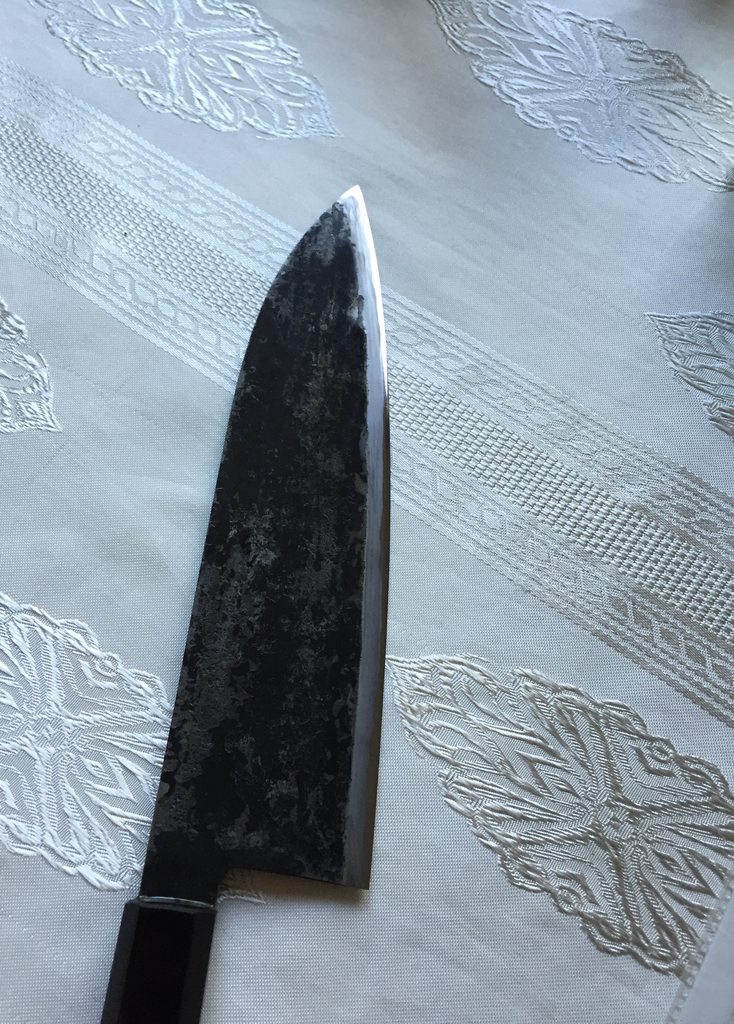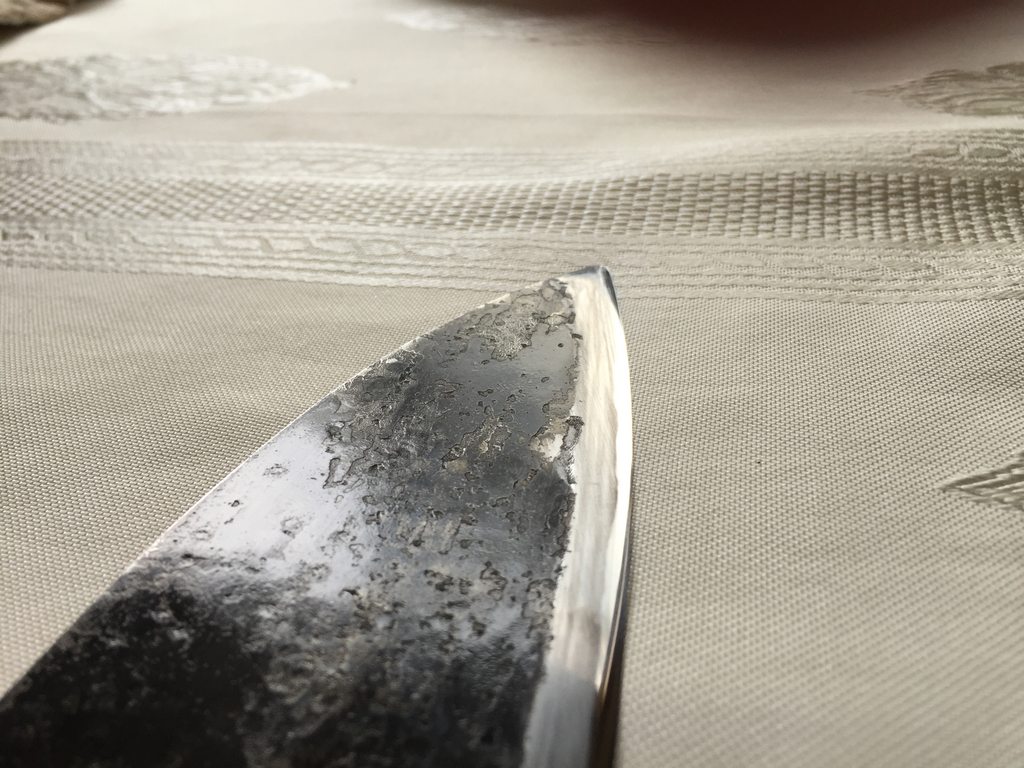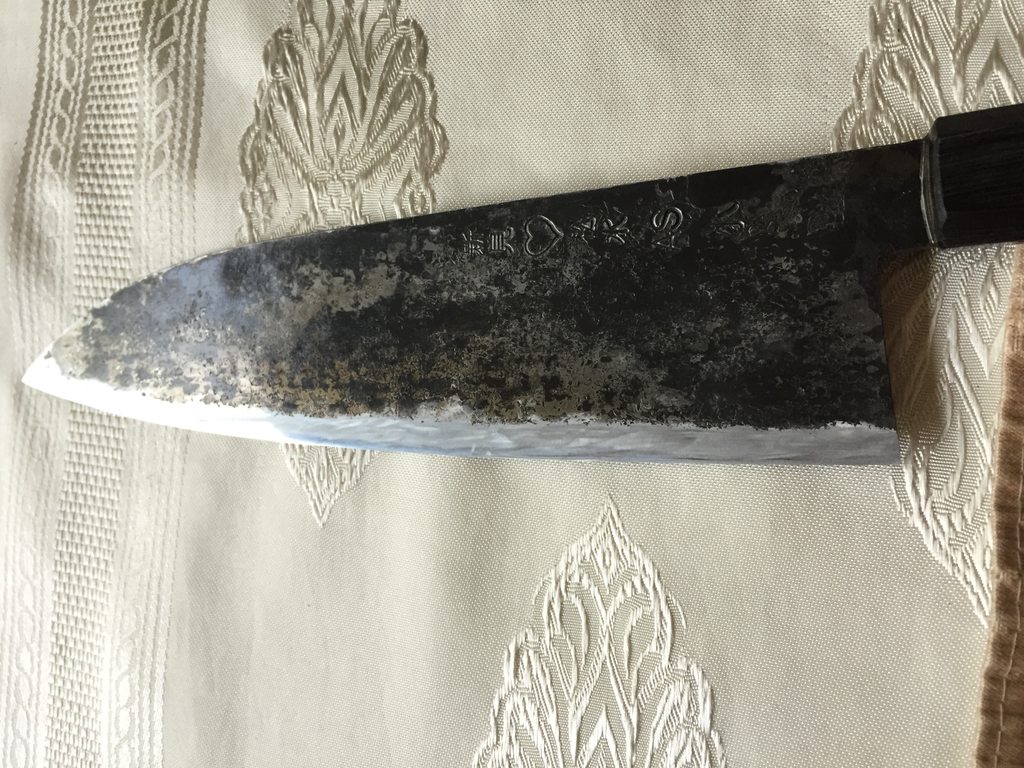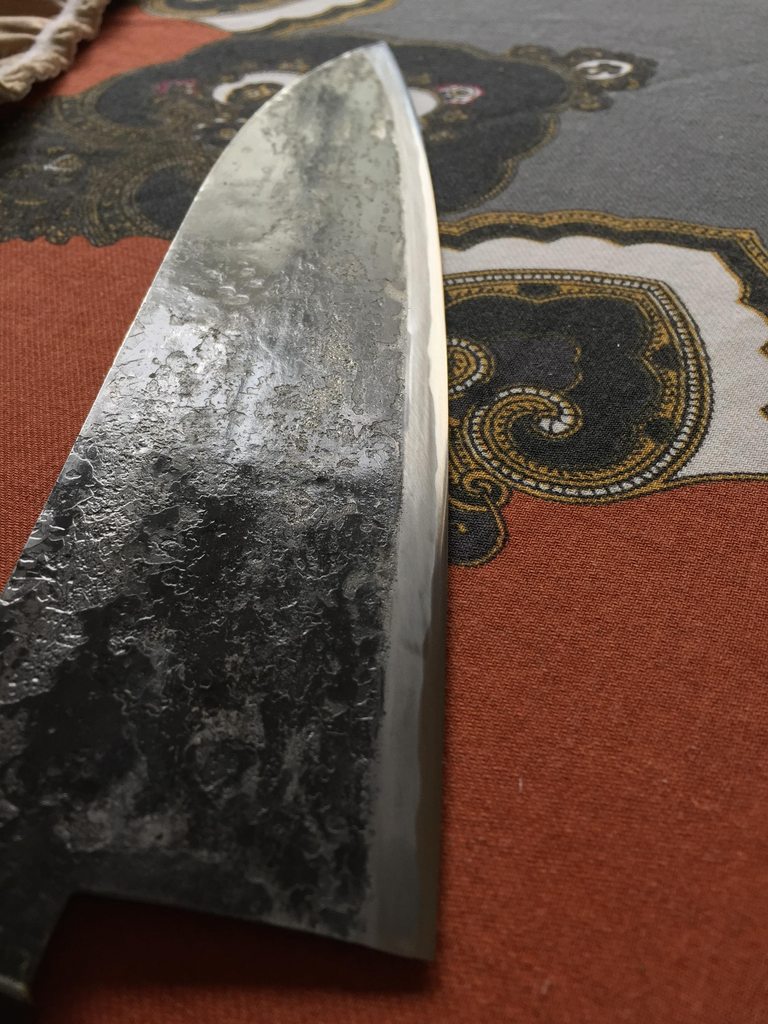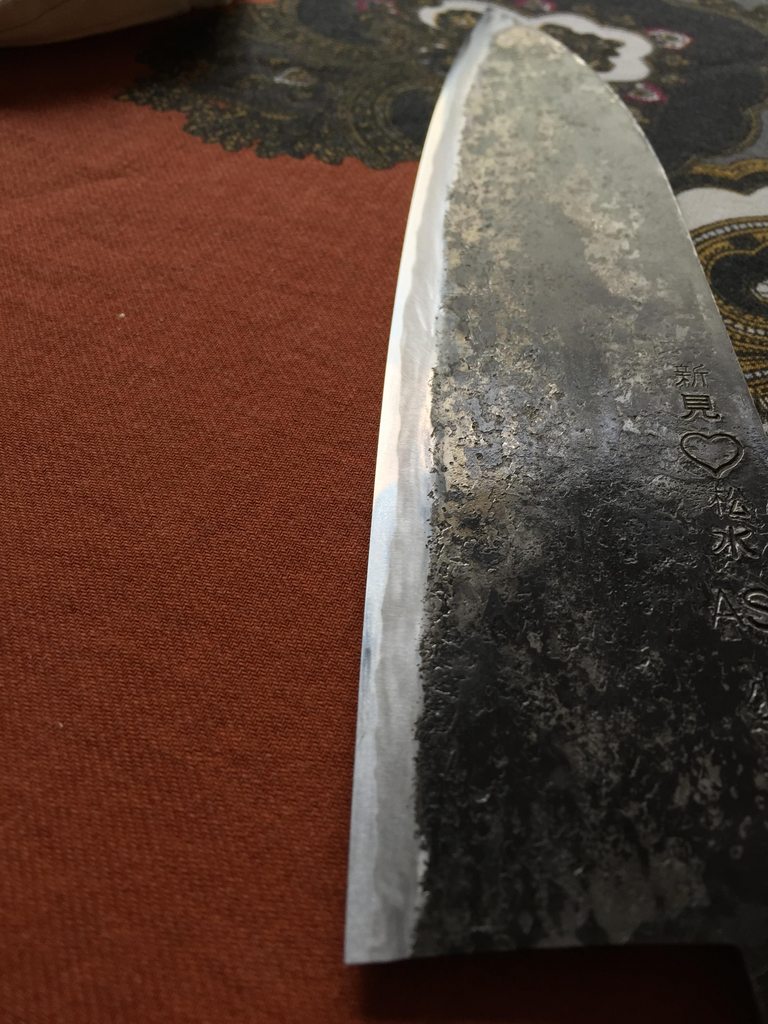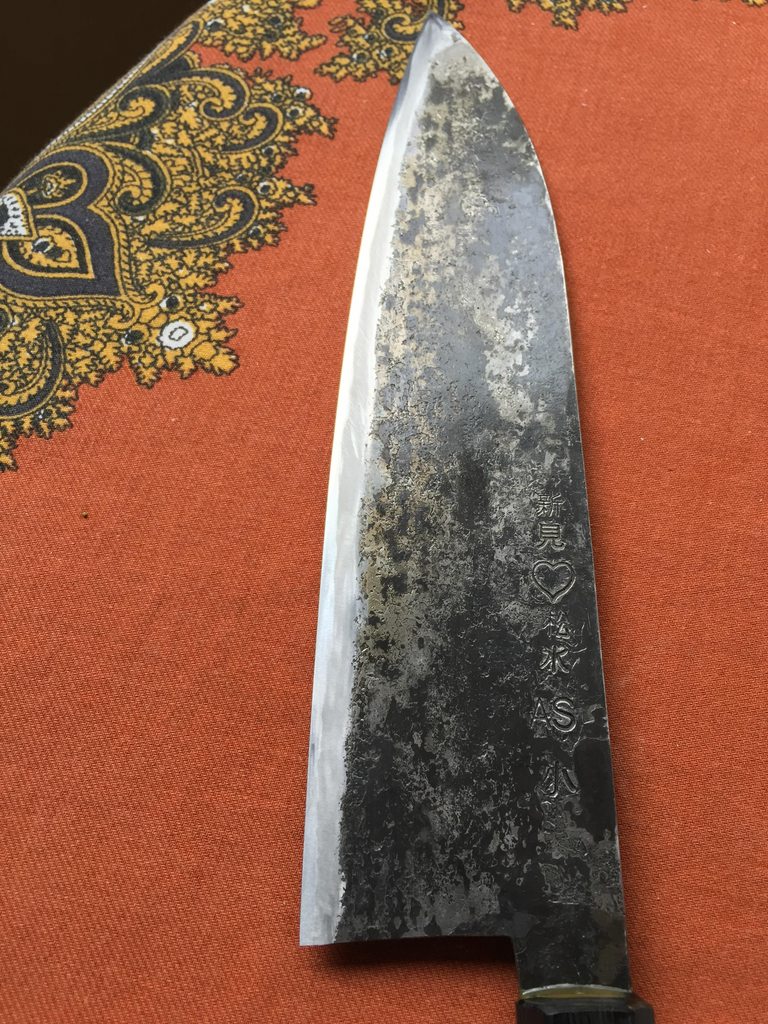Hi KKF!
I'm right-handed and am having persistent problems sharpening the "left" side of blades (when viewed with the tip of the knife pointed away from the observer).
Here's an imgur album showing the issue: http://imgur.com/a/VHE1f
The first image shows the bevels on the "right" side of the blade (they're nice and even). The remaining three images show the problem (left) side.
I assume that I'm probably wobbling on the stones. I also suspect that "swinging" the blade from being perpendicular to the stone (when sharpening the heel) to a more natural 45* angle when sharpening the belly/tip is contributing to the problem.
Any and all suggestions for combating this issue are very appreciated.
Happy Holidays to you all!!!
Stones in my collection:
Bester 700 and 1,200
Cheap Suehiro combo stone (1000/6000). I only use the 6,000 side on this stone.
I'm right-handed and am having persistent problems sharpening the "left" side of blades (when viewed with the tip of the knife pointed away from the observer).
Here's an imgur album showing the issue: http://imgur.com/a/VHE1f
The first image shows the bevels on the "right" side of the blade (they're nice and even). The remaining three images show the problem (left) side.
I assume that I'm probably wobbling on the stones. I also suspect that "swinging" the blade from being perpendicular to the stone (when sharpening the heel) to a more natural 45* angle when sharpening the belly/tip is contributing to the problem.
Any and all suggestions for combating this issue are very appreciated.
Happy Holidays to you all!!!
Stones in my collection:
Bester 700 and 1,200
Cheap Suehiro combo stone (1000/6000). I only use the 6,000 side on this stone.





